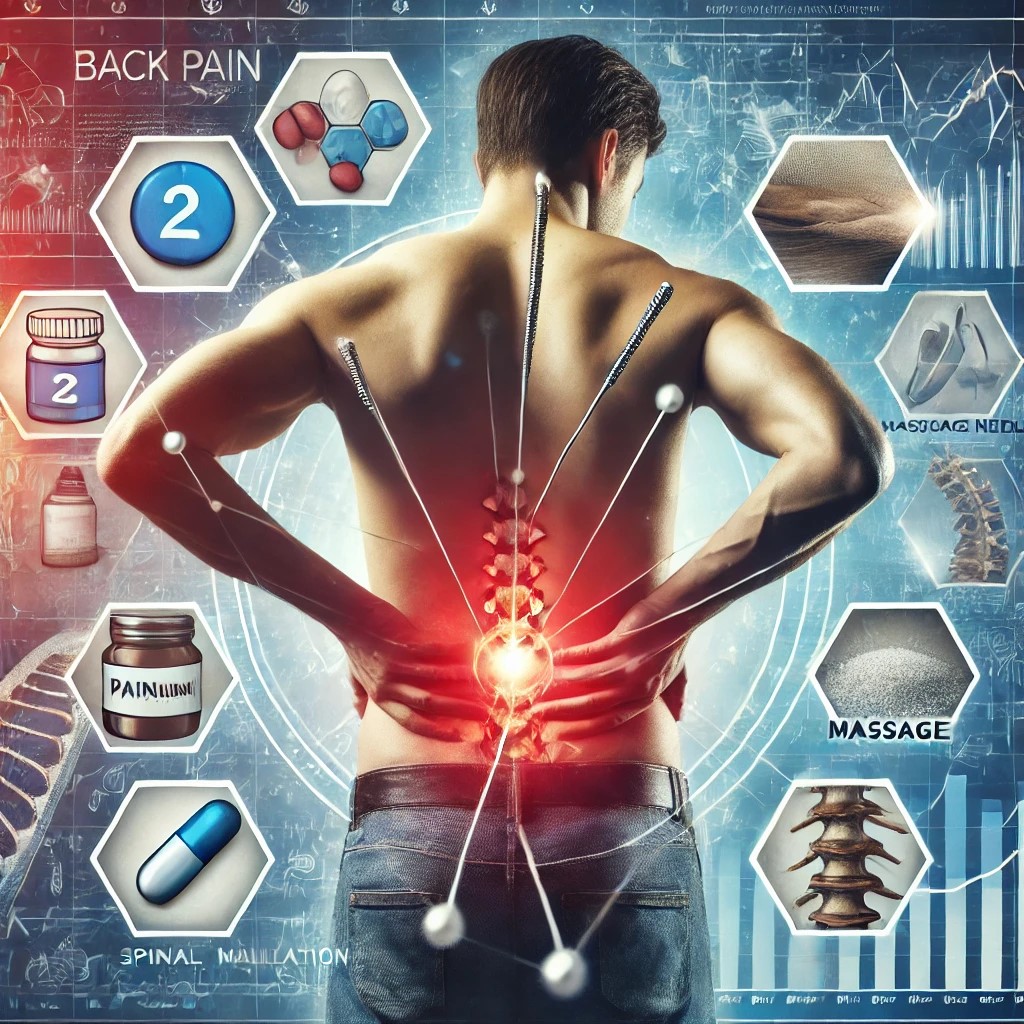New Research Reveals Popular Back Pain Treatments That Don't Work
Study Scope and Methodology
The researchers conducted a comprehensive review of randomized placebo-controlled trials to assess the effectiveness of non-surgical and non-interventional treatments for non-specific low back pain. Their analysis included both pharmacological approaches, such as non-steroidal anti-inflammatory drugs (NSAIDs) and muscle relaxants, and non-pharmacological methods, including exercise, massage, and spinal manipulation.

Figure 1. New Study Exposes Ineffective Back Pain Treatments.
By pooling data from 301 trials, the study examined 56 different treatments or treatment combinations. These trials spanned 44 countries across Africa, North America, South America, Asia, Australia, and Europe, providing a broad and diverse dataset for analysis.
Most Frequently Studied Treatments
The treatments examined most often in the research included:
- NSAIDs – 27 trials
- Opioids – 26 trials
- Laser and light therapy – 25 trials
- Acupuncture – 24 trials
- Gentle manual therapy (mobilization) – 19 trials
A total of 52 trials focused on participants with acute low back pain, 228 trials examined chronic low back pain, and 21 trials included participants with both conditions. Pain intensity was primarily measured using the Visual Analogue Scale or the Numeric Rating Scale.
Among the 69 treatment comparisons analyzed, the certainty of the evidence, as evaluated by the GRADE system, was categorized as follows:
- Moderate – 11 comparisons (16%)
- Low – 25 comparisons (36%)
- Very low – 33 comparisons (48%)
The pooled analysis revealed that, compared to a placebo:
- For acute low back pain, only NSAIDs were found to be effective, with no non-pharmacological treatments showing significant benefits.
- For chronic low back pain, effective treatments included exercise, spinal manipulation, taping, antidepressants, and TRPV1 agonists (drugs targeting pain receptors).
Ineffective or Inconclusive Treatments
The analysis identified several treatments that were either ineffective or had inconclusive evidence:
-
Ineffective Treatments:
- For acute low back pain: Moderate-quality evidence showed that exercise, steroid injections, and paracetamol were not effective.
- For chronic low back pain: Lidocaine (anesthetic) and antibiotics were found to be ineffective. Inconclusive Evidence:
- For acute low back pain: Evidence was inconclusive for 10 non-pharmacological and 10 pharmacological treatments.
- For chronic low back pain: Evidence remained uncertain for 22 non-pharmacological treatments, including acupuncture, massage, osteopathy, and TENS, and 16 pharmacological treatments, such as antidepressants combined with paracetamol, complementary medicines, bisphosphonates, and muscle relaxants.
Study Limitations and Future Needs
The researchers noted that many trials had small participant groups and inconsistent results. Additionally, variations in placebo types and quality may have influenced the findings.
They emphasized the need for large, high-quality, placebo-controlled trials to reduce uncertainty and improve the reliability of efficacy estimates for various non-surgical and non-interventional treatments.
Source: SciTECHDaily
Cite this article:
Priyadharshini S (2025),”New Research Reveals Popular Back Pain Treatments That Don't Work", AnaTechmaz, pp.1113

